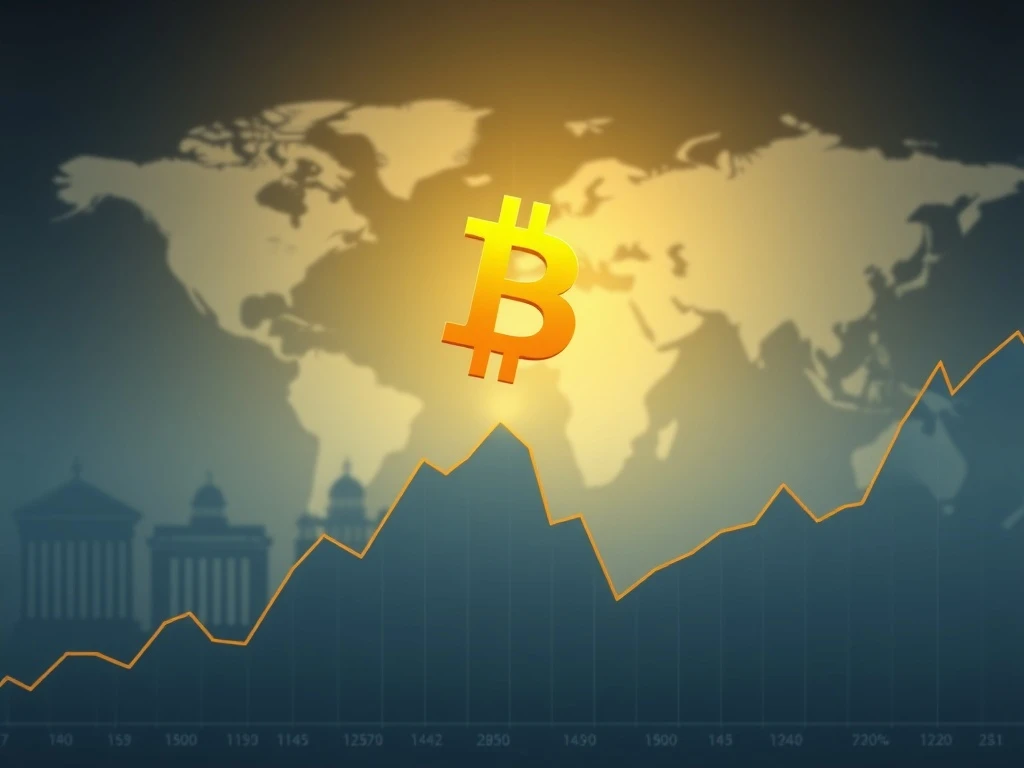Bitcoin’s Resilient Recovery: Crucial $105K Hold Amidst US Bank Rebound and Global Truce

The world of finance constantly presents new challenges and opportunities. Recently, the Bitcoin price demonstrated remarkable resilience, stabilizing around the $105,000 mark despite initial dips. This occurred even as renewed stress rattled US banking markets. Investors closely watched the intertwined dynamics of traditional finance and the evolving cryptocurrency landscape. Consequently, the focus now shifts to whether this uptrend can sustain itself.
Navigating Banking Stress: The US Bank Recovery Story
Bitcoin initially fell below $105,000, extending a two-day decline. This movement reflected broader concerns over financial stability stemming from renewed US banking stress. The market witnessed significant volatility. However, a pivotal shift occurred. Regional lenders, crucial components of the US financial system, delivered stronger-than-expected earnings. This development significantly eased investor fears regarding a wider credit contagion.
Several key regional lenders reported lower provisions for credit losses than anticipated. For example, Truist Financial, Regions Financial, and Fifth Third Bancorp all showcased robust performance. This news provided much-needed relief to markets. Earlier, the S&P Regional Banks Select Industry Index experienced a sharp 6.3% decline. This fall was primarily led by Zions Bancorporation and Western Alliance Bancorp, which disclosed loan losses from fraud in distressed commercial mortgage funds.
The upbeat earnings quickly helped the S&P Regional Banks Index claw back losses. Zions Bancorp rebounded over 6%, Truist Financial rose 2%, and Western Alliance gained 1.6% in early trading. European financials, including Barclays and Deutsche Bank, pared earlier losses. Similarly, Asian lenders like Mizuho Financial and Sumitomo Mitsui also steadied after heavy selling. RBC Capital Markets noted that regional banks “remain well reserved for potential losses” and have bolstered capital since 2023. This suggests the recent sell-off may have been overdone, paving the way for a more stable US bank recovery.
Global Market Sentiment Shifts with Trump’s Tariff Truce
Adding to the improved financial tone, US President Donald Trump confirmed a significant policy shift. He stated that steep tariffs on Chinese goods “will not persist.” Furthermore, he announced plans for a summit with Chinese President Xi Jinping within two weeks. This statement followed Beijing’s expressed willingness to collaborate on trade disputes. The announcement immediately sparked a rebound in global markets.
US stock futures surged by 1.2%, signaling renewed investor confidence. The Kobeissi Letter, a market observer, highlighted this dramatic shift:

The tone of risk sentiment notably calmed across various asset classes. Such geopolitical developments often profoundly impact investor behavior. A more harmonious trade relationship between two global economic powerhouses can reduce uncertainty. This, in turn, fosters a more positive market sentiment globally. The broader financial ecosystem often reacts positively to such de-escalations, creating a more favorable environment for risk assets like Bitcoin.
Bitcoin Price Action and the Cryptocurrency Outlook
Despite the improved risk appetite in traditional markets, Bitcoin continued to struggle near the $105,000 level. This indicates that while macro factors influence crypto, Bitcoin’s movements also possess unique drivers. Analysts are now closely scrutinizing the Bitcoin price for signs of a sustained uptrend. Crypto News Insights previously reported that recent crypto and equity pullbacks “do not have long-term fundamental implications.” This suggests the market is experiencing short-term volatility rather than systemic distress.
However, opinions diverge on Bitcoin’s immediate future. Some analysts caution that the current bull cycle may be nearing its end. For instance, analyst CryptoBird predicted on X (formerly Twitter) that the Bitcoin “bull run ends in 10 days.” This forecast relies on historical cycle patterns, which often show predictable phases of expansion and contraction. Conversely, others maintain a more optimistic cryptocurrency outlook. They argue that Bitcoin’s underlying fundamentals remain strong, supported by increasing institutional adoption and growing awareness.
Key takeaways from recent market activity include:
- Bitcoin stabilized after US regional banks posted stronger-than-expected earnings, easing credit fears.
- Global market sentiment improved following President Trump’s statements on tariffs and a planned summit with China.
- Analyst opinions on Bitcoin’s bull run vary, with some predicting an imminent end while others see short-term volatility.
Ensuring Financial Stability in a Volatile World
The recent events underscore the interconnectedness of global financial markets. Issues in one sector, such as regional banking stress, can quickly ripple through others, including the cryptocurrency space. Maintaining financial stability is paramount for sustained economic growth and investor confidence. The swift response and resilience shown by US regional banks, coupled with positive geopolitical developments, helped mitigate a potentially larger market downturn.
Investors must remain vigilant and informed. The interplay between traditional finance and cryptocurrencies continues to evolve. While Bitcoin often acts as a hedge against traditional market instability, its price can still be influenced by significant macro events. Therefore, understanding these broader economic shifts is crucial for anyone involved in the crypto market. The coming weeks will likely reveal whether Bitcoin can fully capitalize on the improving sentiment or if it will face further challenges as it navigates its unique market cycles.
This article does not contain investment advice or recommendations. Every investment and trading move involves risk, and readers should conduct their own research when making a decision.









